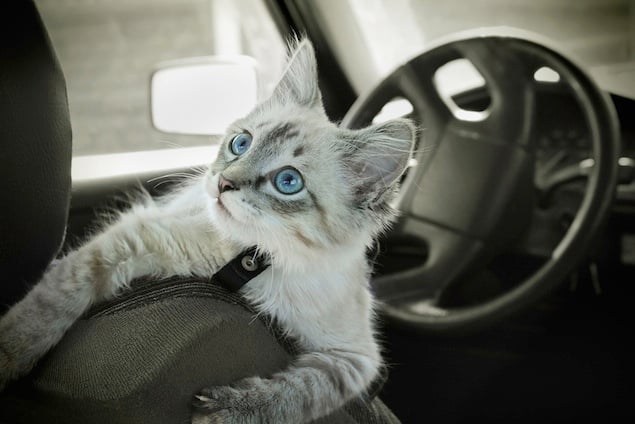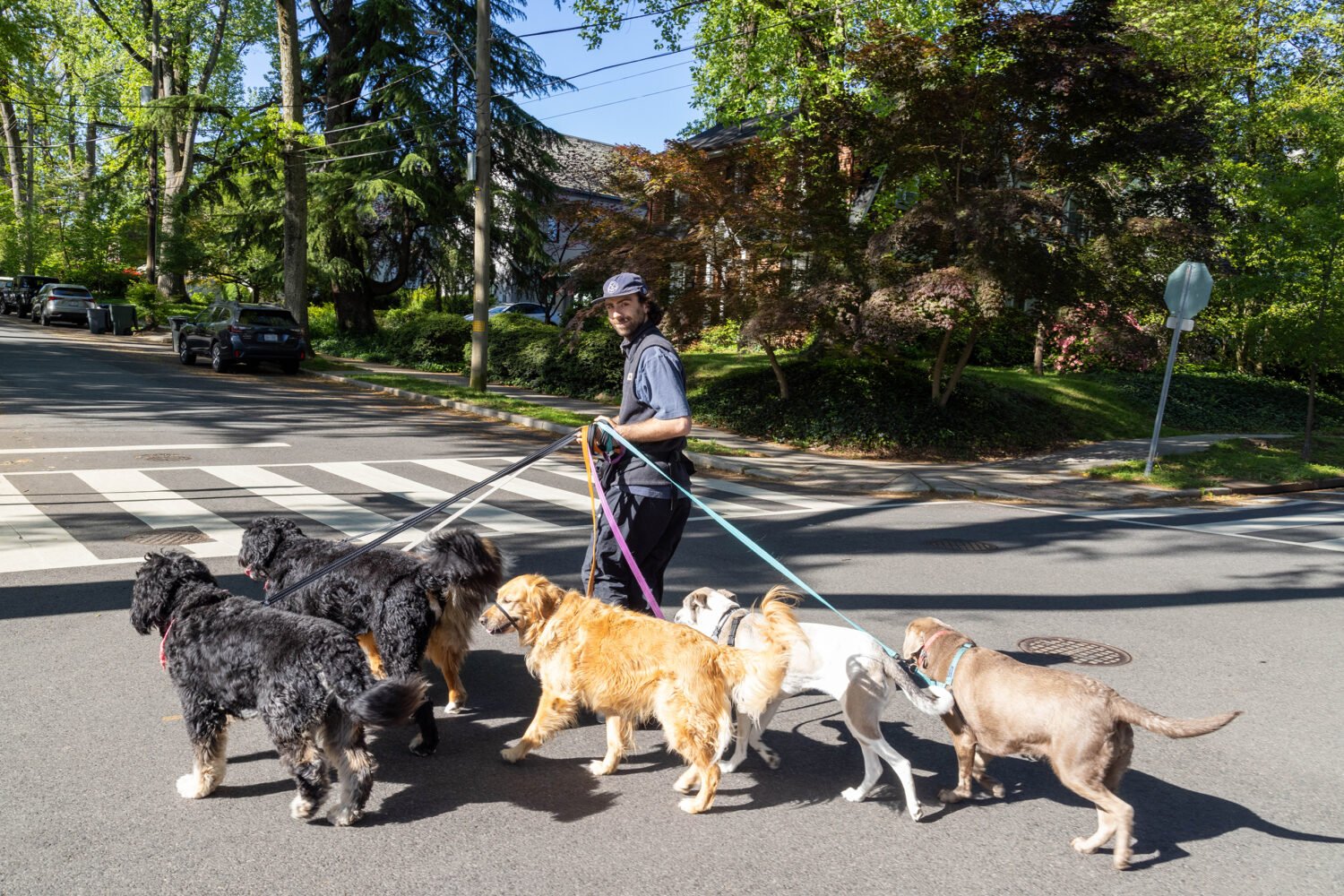Have a question you’d like to ask a vet? Send your query to pets@washingtonian.com with the subject line “Vet Q.”
Q: My cat freaks out whenever we bring her in the car—she bangs against the sides of her carrier, yowls nonstop, basically throws a fit. Do you have any suggestions of how to make car rides more tolerable for her?

Dr. Chris Miller, AtlasVet DC: The more I think about it, the more I feel like cats that fear cars are very intelligent. Dogs that just jump in a car and hang their heads out the window seem a little cavalier to blindly trust such a wild experience. They don’t know what cars are or how they work. I get nervous in planes, and I know how they work. Suddenly, a cat is plucked from its domain, jammed into a carrier, and tossed into a large metal box that hurtles along at 60 miles per hour. This must be horrifying for cats that only leave the house once a year.
Cats do not like change, and the first sign that their routine is about to get shaken up is the carrier. Just the sight of it can cause cats to panic, so making sure it is a safe place by getting your cat used to it in advance can be incredibly helpful. Use the carrier as a place for kittens to sleep, play, or eat as they are being raised. For adult cats, get the carrier out many days in advance of a scheduled car trip and try to make it a desirable destination by placing treats or catnip inside. Using an anti-anxiety pheromone spray like Feliway can help cats distinguish the carrier as a pleasant, more familiar place.
If you are like me, you keep your carrier in the basement, where it becomes covered in cobwebs and dust. I am scared to touch some of the carriers that owners bring into the hospital, let alone crawl inside them. Making sure you have a carrier that is clean, large enough, and lined with a fresh, soft blanket is a great start to making cats less averse to it. Newer carriers that load from the side and the top give options to owners trying to find the best ways to load their cats into them. Once at the veterinarian’s office, having a carrier that is easy to disassemble can mean that the cat doesn’t have to leave the carrier for the exam and relieves stress greatly. The key to getting a cat more comfortable with travel is familiarity. The more I fly, the less I worry about every sound or bank the plane makes. I’ve been there before and it always works out.
The experience is similar for a cat in a car. Once you have your cat carrier-trained you can start moving them around to see how they do. Simply taking them to the car, giving them treats (if they will eat them) and returning back inside can help desensitize them from fear of travel. When you do finally venture off in the car, covering the carrier with a blanket can help cats feel more secure. I often recommend that owners bring their dogs or cats to the vet office on a brief dry run for them to receive treats for a good first positive experience. Using positive reinforcement and desensitizing your cat to the fears of travel can take some forethought and a decent amount of effort. Despite hard work and training, cats occasionally need anti-anxiety medications or sedatives for travel. This should only be done after discussing the situation with your veterinarian.
Find Dr. Chris Miller on Twitter at @DCVet.

















